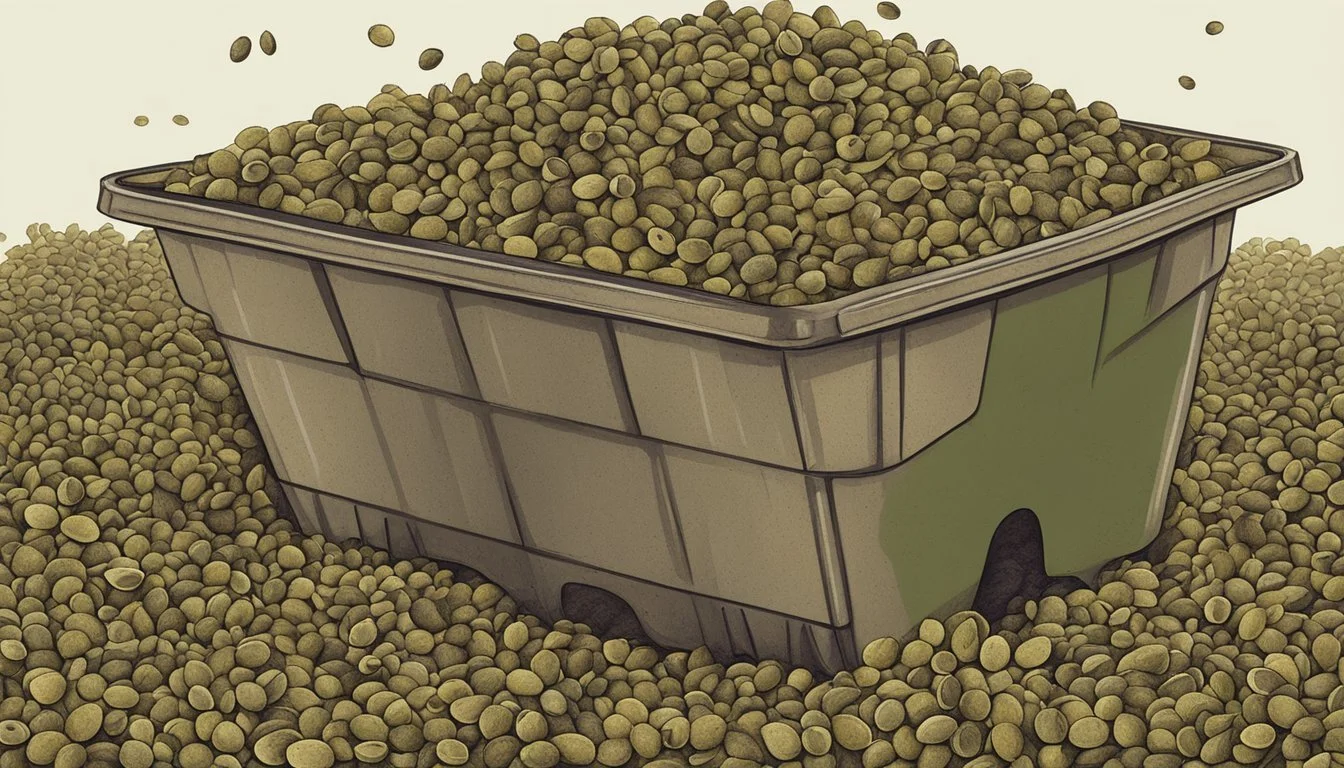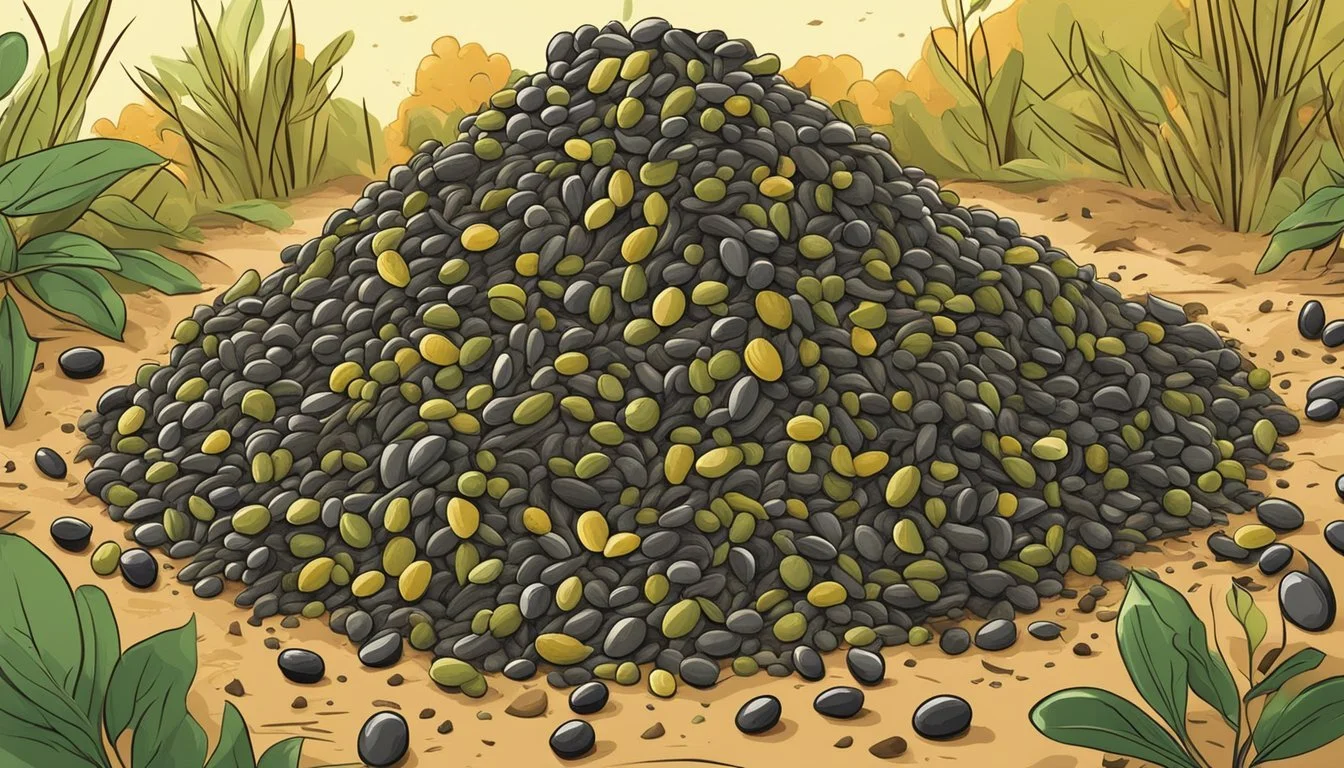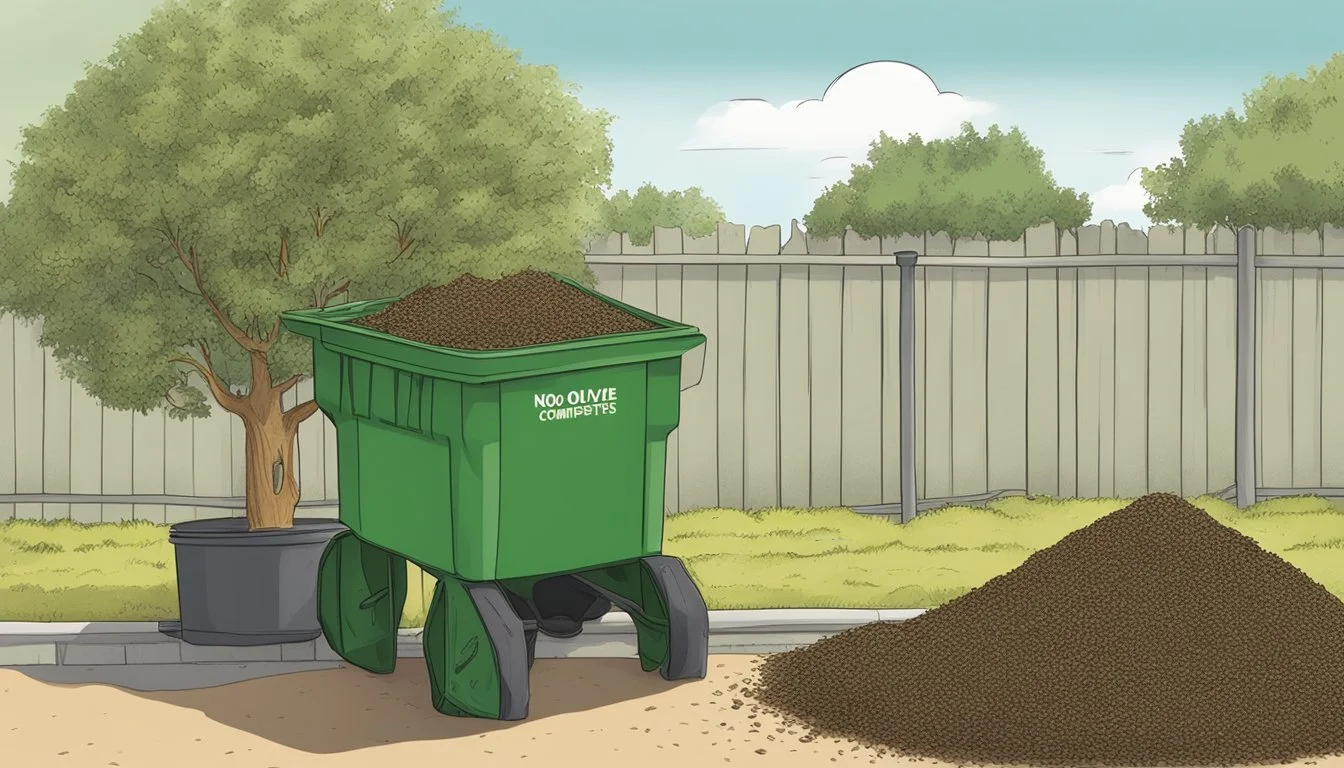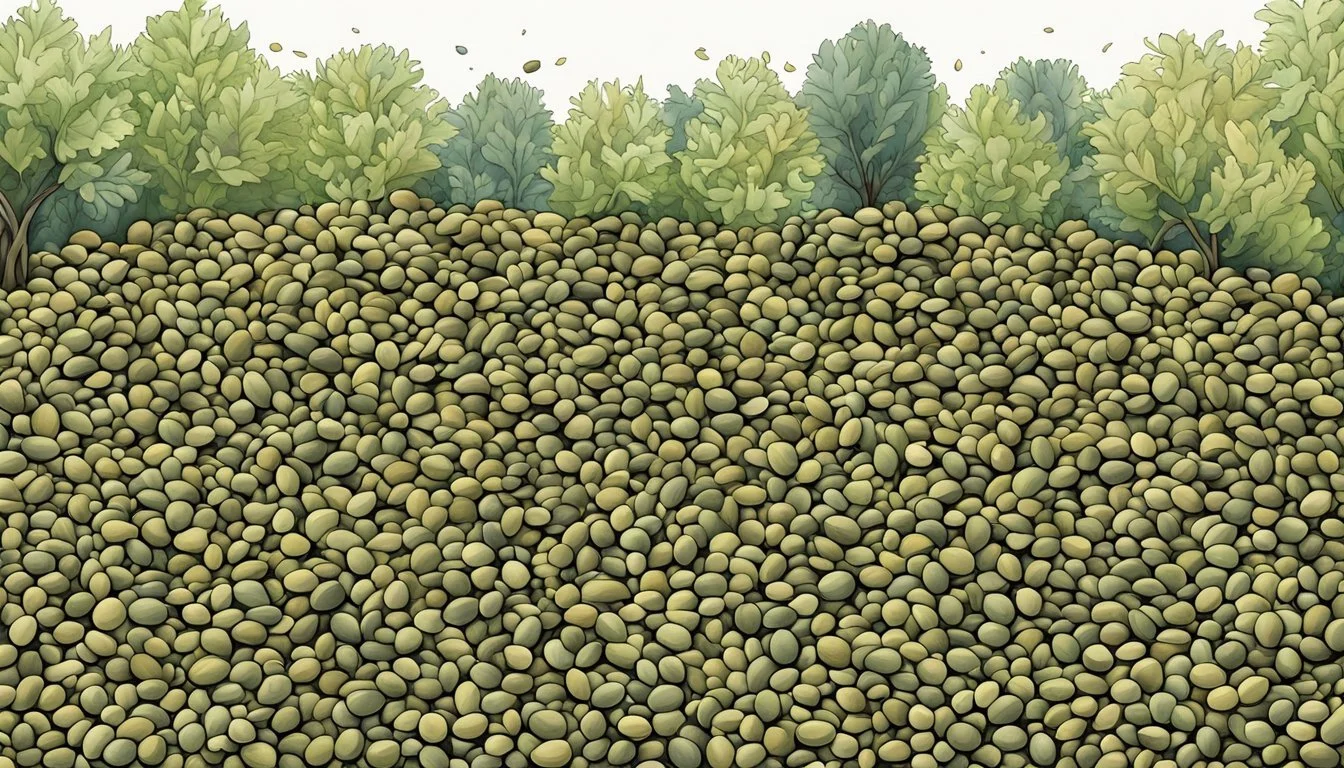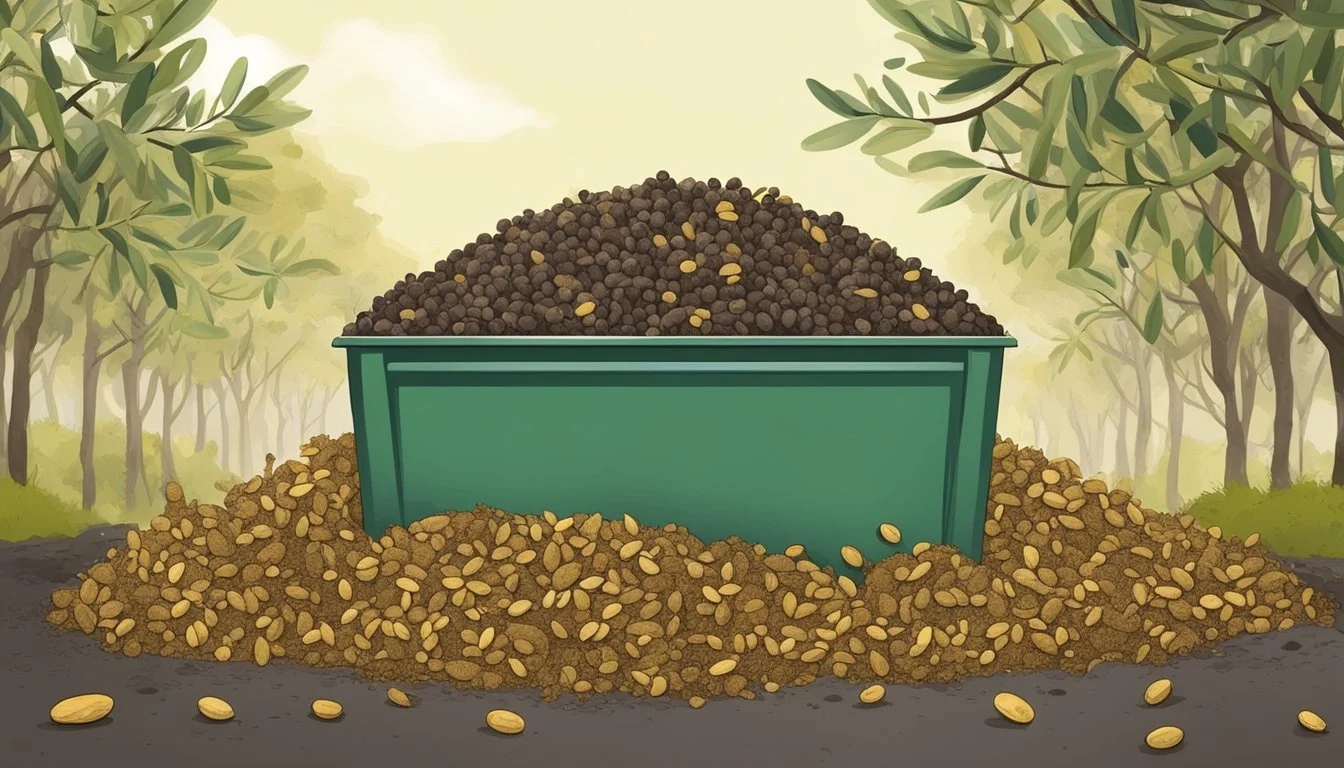Can You Compost Olive Pits?
Unveiling the Truth behind Organic Waste Recycling
Composting has become a widely accepted method for disposing of kitchen waste sustainably, with many items, from vegetable scraps to fruit peels, enriching the resulting soil amendment. Olive pits, similar to cherry pits and avocado pits, present an interesting dilemma due to their hard, woody nature. While organic matter in general is a good candidate for the compost pile, the question of whether olive pits can be successfully composted is a topic of interest for gardeners and environmentalists alike.
Despite their tough exterior, olive pits do not need to be relegated to the trash. They can indeed be included in composting efforts, but with certain considerations. Olive pits decompose at a much slower rate than the fleshy part of the fruit, which means they remain in the compost pile longer, possibly outlasting the composting period for other materials. This aspect can affect the uniformity of the compost and the timeline for its use in the garden. Additionally, olive pits have the potential to add valuable nutrients back into the soil once they do break down, offering benefits similar to other composted materials.
Why Composting Is Beneficial
Composting is an essential process for recycling organic matter, turning kitchen scraps and yard waste into valuable soil amendment. When organic material like olive pits is composted, it undergoes a natural decomposition process that transforms waste into nutrient-rich compost. This compost can greatly improve soil structure, promoting better water retention, aeration, and providing essential nutrients to plants.
Climate Change Mitigation: Composting plays a significant role in combating climate change. By diverting organic waste from landfills, composting helps reduce methane emissions—a potent greenhouse gas that contributes substantially to global warming. The decomposition in landfills occurs anaerobically (without oxygen) and releases methane, whereas composting is an aerobic process (with oxygen) and emits considerably less methane.
Renewable Energy Source: Although not directly a form of renewable energy, the composting of materials like olive pits can indirectly support renewable energy initiatives. Composted organic matter can improve soil health, leading to more robust plant growth and potentially more biomass for renewable energy production.
Soil Amendment:
Enhances soil fertility
Promotes healthy plant growth
Restores vital soil microorganisms
Recycling Organic Matter:
Reduces waste in landfills
Lowers greenhouse gas emissions
Supports a sustainable ecosystem
In summary, composting transforms waste into a resource, enriching soils and helping to reduce the impact of waste on the environment. It is a confident step toward sustainable living and a proactive measure against climate change.
Understanding Olive Pits
Olive pits, also known as olive stones, are the hard seeds found inside olives. They are a byproduct of the olive industry and possess qualities that can influence their utility in various sectors.
Characteristics of Olive Pits
Olive pits carry a high oil content, which is a significant factor in their decomposition and potential reuse. Despite being a challenging material to compost due to their density and oiliness, they do break down over time and can contribute to the composting process if managed correctly. Their robust nature makes them suitable for alternative uses, such as biomass fuel, where they can be converted into a source of energy.
Density: Dense and hard to break down in typical composting environments.
Oil Content: Contains oils that can slow decomposition but have energy-producing potential.
Environmental Impact: If properly processed, can be repurposed in eco-friendly applications.
Olive Pits in the Food Industry
In the food industry, olive pits are usually considered waste. However, innovative uses are emerging, such as milling the pits into a granular form to be used as a dietary fiber supplement or as a natural exfoliant in food preparation. They are not typically consumed directly due to their hardness and potential to damage teeth.
Food Processing: Often discarded, but can be ground for use in dietary fiber enhancement.
Non-Consumable: Not eaten whole because they are hard and could cause dental injury.
Basics of Composting
Composting is an aerobic method where organic waste decomposes into a nutrient-rich soil amendment through the balance of carbon, nitrogen, moisture, and oxygen. This section will focus on the process itself and the materials suitable for composting.
The Composting Process
The composting process involves four main components: microorganisms, moisture, oxygen, and temperature. Bacteria and fungi play a critical role, breaking down organic material into compost. For effective decomposition, compost piles require adequate moisture content, similar to a wrung-out sponge. They also need oxygen, which is supplied by turning the pile or aerating it with holes or pipes. The process generates heat, and maintaining the correct temperature range is crucial as it affects the activity of the microorganisms.
Maintain Moisture: The pile should be damp, not soaked.
Supply Oxygen: Regularly turn the pile or introduce air via perforated pipes.
Control Temperature: A well-aerated compost will self-heat through microbial activity.
Composting Materials
Materials that can be composted fall into two categories: carbon-rich and nitrogen-rich. Carbon materials, or "browns," include dry leaves, branches, and paper. Nitrogen materials, or "greens," consist of food scraps, coffee grounds, and grass clippings. A balance between these two types of materials is necessary to fuel the microorganisms responsible for breaking down the waste.
Nitrogen-Rich Materials: Food scraps, vegetable peelings, coffee grounds
Carbon-Rich Materials: Dry leaves, twigs, paper
When composting items such as olive pits, patience is necessary as these materials contain olive oil, which may slow down the decomposition process slightly due to their high fat content. However, they can be successfully composted given time and the right conditions.
What Can and Can't Be Composted
This section outlines the specific types of materials that are suitable for composting and those that should be avoided to maintain a healthy compost process.
Suitable Composting Materials
Fruits and Vegetable Scraps: These include peels, cores, and other parts of fruits and vegetables, except for oil-rich items like olives and their pits, which decompose slowly.
Grass Clippings and Leaves: These green materials are excellent nitrogen sources that help to heat the compost pile.
Straw and Twigs: These provide the necessary carbon-rich material, aiding in creating air pockets and improving aeration.
Coffee Grounds and Filters: Rich in nitrogen, they help microorganisms thrive, speeding up the composting process.
Shredded Paper and Cardboard: Only use non-colored and non-glossy varieties as they are carbon-rich and break down well.
Materials to Avoid in Compost
Meats, Fats, and Dairy Products: These materials, including meat, grease, oil, cheese, and dairy products, should not be composted; they attract pests and can cause odor problems.
Bones and Fish: Similarly, bones from meat and fish can attract pests and take a very long time to break down.
Diseased Plants: Adding them can spread disease to other plants when the compost is used.
Colored or Glossy Paper: The dyes and coatings can introduce toxins into the compost pile.
Oily Foods: Even small amounts of oils can upset the compost's moisture balance and slow down the decomposition process.
Olive Pits and Composting
When incorporating olive pits into compost, understanding their decomposition rate, the proper method for adding them to compost, and their benefits as a nutrient-rich soil amendment is crucial.
Decomposition of Olive Pits
Olive pits are known for their hard exterior and resilience, which leads to a slower decomposition process compared to other organic kitchen scraps. The rate at which they break down is influenced by factors such as moisture and temperature within the compost pile. To expedite decomposition, maintaining a balanced environment teeming with microorganisms is essential, as these are the primary agents that break down organic material.
Adding Olive Pits to Your Compost
When adding olive pits to compost, they should be mixed with nitrogen-rich materials such as food scraps or green garden waste to optimize the carbon-to-nitrogen ratio. Ensuring regular turning of the compost pile helps distribute air and moisture evenly, which is pivotal in creating an environment conducive for the breakdown of tough materials like olive pits.
Benefits of Olive Pits in Compost
Despite their slow decomposition, olive pits can contribute to creating a nutrient-rich and structurally sound fertilizer. As they break down, they release nutrients back into the soil, making it an effective soil amendment over time. Additionally, the presence of olive pits in compost can improve the aeration of the end product, benefiting plant roots upon application.
Enhancing Compost Quality
To produce high-quality compost, especially when including materials like olive pits, one should focus on the balance of compostable materials and maintaining optimum conditions within the compost pile.
Balancing Green and Brown Materials
Green materials are rich in nitrogen, which is essential for the composting process. They include items such as food scraps, grass clippings, and coffee grounds. On the other hand, brown materials provide carbon, which serves as an energy source for the decomposing organisms. Brown materials include dried leaves, branches, and paper products. A balanced ratio of approximately 1:3 of green to brown materials by volume helps regulate moisture levels and provides the necessary oxygen to minimize the production of greenhouse gases like methane.
Ideal Green (Nitrogen-rich) Materials:
Vegetable and fruit scraps
Grass clippings
Coffee grounds
Ideal Brown (Carbon-rich) Materials:
Dried leaves
Cardboard
Wood chips
Maintaining Proper Compost Conditions
To enhance the decomposition process and reduce the time it takes for materials like olive pits to break down, maintaining proper conditions in the compost pile is crucial. The compost should be kept moist, like a well-wrung sponge, but not saturated, to support the microbes responsible for decomposition. Aeration is key; turning the pile regularly guarantees a steady supply of oxygen, which is vital for aerobic decomposition and to prevent anaerobic conditions that could lead to odor and the production of greenhouse gases. Olive pits, due to their hardness and density, benefit from these frequent turnings and consistent conditions as they break down over time.
Using Compost in Agriculture
Compost, created from the decomposition of organic materials, serves as a vital component in agriculture. It is instrumental in enhancing soil quality and promoting healthy crop growth.
Compost as a Soil Amendment
Compost acts as a soil amendment, enriching the soil with nutrients and improving its structure. When incorporated into the soil, compost:
Enhances nutrient-rich soil by providing a balanced mix of essential minerals and organic matter.
Improves water retention, thereby reducing the need for frequent irrigation.
Helps suppress weed growth by creating a more competitive environment for crops.
Increases soil aeration, which is crucial for root development and the proliferation of beneficial microorganisms.
Compost and Crop Growth
The utilization of compost in agriculture positively impacts crop growth:
Provides a slow release of nutrients, which is less likely to cause nutrient runoff compared to synthetic fertilizers.
Boosts plant resilience against diseases and pests as a result of improved overall soil health.
Can reduce dependency on chemical fertilizers, making it a cost-effective and environmentally-friendly option.
By integrating compost into agricultural practices, farmers can achieve more sustainable cultivation methods and healthier crop yields.
Potential Problems and Solutions
When composting olive pits, one may encounter specific issues related to their decomposition rate and attraction to pests. These challenges can be addressed with effective troubleshooting and preventative approaches to maintain a healthy compost ecosystem.
Troubleshooting Common Composting Issues
Composting olive pits requires patience as they have a high oil content and a hard shell, which slow down their decomposition. To ensure a consistent breakdown process, one should:
Maintain the temperature: A compost pile should be kept between 135-160°F (57-71°C) to optimize the activity of microorganisms.
Aerate the pile: Regularly turning the compost ensures adequate air flow, which is critical for the breakdown of organic material.
Monitor the consistency: Olive pits should be mixed with green and brown materials to balance moisture and enhance decomposition.
Problems with decomposition generally arise from an imbalance in these elements. By adjusting the temperature, airflow, and compost consistency, one can troubleshoot most issues.
Preventing Pests and Rodents
The presence of olive pits in compost could potentially attract pests and rodents due to their flavor and slow decomposition. Here are ways to prevent this:
Bury the pits: Placing olive pits deep within the compost pile makes them less accessible to pests.
Use a compost bin: Sealed compost bins can deter rodents and pests while maintaining safety and hygiene.
Balance the pile: Ensure a mixture of green and brown compost materials to avoid creating an environment attractive to pests.
The key to preventing pests and rodents lies in minimizing their access to the compost and avoiding conditions that could attract them. The aforementioned strategies are practical and effective for maintaining compost safety and integrity.
Creative Uses for Olive Pits
Olive pits, often discarded as waste, have found their place as a valuable resource in innovative applications such as crafting and biofuels.
Olive Pits in Homemade Crafts
Olive pits can serve as an intriguing material for homemade crafts. They possess a hardy structure composed of lignin and cellulose, which makes them suitable for creating durable items. Craft enthusiasts can clean and carve olive pits into beads for jewelry, or even intricately engrave them to make unique buttons or decorative pieces. As they are a natural byproduct, using olive pits in crafts promotes sustainability and reduces waste.
Olive Pits as Biomass Fuel
When processed, olive pits become a viable source of biomass fuel, contributing to the production of renewable energy. Their high lignin content allows them to burn efficiently, making them a biofuel option for generating heat and power. Here is how olive pits fare as a biomass fuel:
Energy Content: Olive pits have a considerable energy content due to natural oils and dense fibers.
Sustainability: They are a byproduct of the olive industry, thus utilizing them helps in waste reduction and supports renewable energy efforts.
Availability: In regions with extensive olive production, pits are readily available and can be harnessed cost-effectively.
By embracing the energy potential of olive pits, industries can offset carbon emissions and rely less on fossil fuels.
Environmental Impact of Composting
When organic matter is composted, it not only enriches the soil but also significantly alters waste management practices, reducing landfill accumulation and greenhouse gas emissions.
Reducing Landfill Waste
Each year, a substantial amount of the solid waste generated is comprised of organic matter that could be composted. By diverting this waste from landfills through composting, it lessens the volume of trash in these facilities. Landfills are the third-largest source of methane emissions in the United States, a potent greenhouse gas contributing to climate change. By composting materials like food scraps, yard trimmings, and appropriate agricultural byproducts, less solid waste is sent to landfills, curtailing the generation of landfill gases.
Composting and Climate Change
Composting plays an active role in combating climate change by recycling carbon and nutrients back into soil systems. This process not only helps soil retain nutrients and water but also reduces the need for chemical fertilizers. As organic materials decompose in a compost system rather than in landfills, it avoids the production of methane and reduces the emission of greenhouse gases. Furthermore, healthier soils with higher organic content can support better plant growth, which in turn can absorb more carbon dioxide from the atmosphere, creating a beneficial cycle for the environment.
Advanced Composting Techniques
When dealing with compostable materials like olive pits, advanced techniques can optimize decomposition and handle larger quantities with greater efficiency.
Vermicomposting
Vermicomposting utilizes certain species of earthworms to break down organic waste into high-quality compost. For olive pits, experts recommend a pre-treatment to soften the pits before adding them to the worm bin, as they are quite hard for the worms to break down directly. This approach involves:
Soaking: Soak the olive pits in water for several days.
Crushing: Lightly crush the softened pits to aid worms in their breakdown process.
The equipment needed for vermicomposting typically includes a worm bin, bedding material, and worms, such as Eisenia fetida or Eisenia andrei.
Industrial Composting Methods
Industrial composting methods can process olive pits on a much larger scale and do so effectively. Facilities utilize a combination of controlled temperatures, microbial activity, and mechanical turning to expedite the decomposition process. They generally follow these steps:
Mixing: Olive pits are mixed with green and brown waste to create a balanced carbon-to-nitrogen ratio.
Aeration: Equipment provides consistent aeration to increase microbial activity.
Temperature control: Industrial composters maintain higher temperatures to speed up the degradation of hard materials like olive pits.
This methodology requires specialized equipment and expertise but results in a faster transition from waste to nutrient-rich soil amendment.
Compost Utilization and Safety
Incorporating compost, including that derived from olive pits, into home gardens supplies essential nutrients and enriches the soil. It's important to handle and apply compost carefully to protect both plant and human health.
Applying Compost in Home Gardens
Compost, created through the natural decomposition of organic materials such as fruit scraps and olive pits, acts as a nutrient-rich amendment for garden soils. To use compost effectively:
Spread a layer of compost over the garden bed, typically 2-3 inches thick.
Incorporate the compost into the top 6 inches of soil before planting.
Make a compost mulch by spreading it around established plants to conserve moisture and suppress weeds.
Compost not only improves soil structure but also provides a slow release of important nutrients, such as nitrogen, phosphorus, and potassium, which are essential for plant growth.
Compost Safety and Health Concerns
While compost is beneficial, safety is paramount when handling and applying it in gardens:
Wear gloves to prevent skin irritation and transfer of potentially harmful organisms.
Ensure proper composting times to eliminate pathogens and reduce the presence of harmful bacteria.
If using compost as mulch, avoid direct contact with plant stems to prevent rot and disease.
Gardeners should be cautious not to over-apply compost, as excessive amounts can harm plant roots and unbalance soil nutrients. Safe compost handling and application foster thriving home gardens and minimize health risks.
Conclusion
Composting olive pits presents a challenge due to their hardiness and slow decomposition rate. It is recommended to avoid adding olive pits directly to a compost pile. They can take a long time to break down and may even sprout under certain conditions. Those considering composting olive pits may opt to use them decoratively in the garden or as fuel for fires instead.
The leftover brine, high salt levels, and acidity that olives can introduce into a compost pile merit careful consideration. These elements can slow down the overall composting process and potentially disrupt the delicate balance needed for effective decomposition. To maintain a healthy composting environment, it's crucial to balance materials of varying pH levels.
Additionally, specific use cases, such as mulching or processing into a more degradable form, may become viable solutions for handling olive pits. For instance, grinding the pits into smaller pieces could assist in integrating them into compost as a source of nutrients.
To ensure the health of a compost pile, one should always:
Monitor for high acidity
Balance the compost with appropriate materials
Consider alternative uses for materials difficult to compost
Incorporating olive pits into compost requires thoughtful consideration, but alternative practices can aid in repurposing these waste materials effectively.




